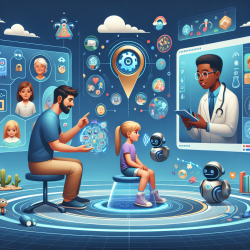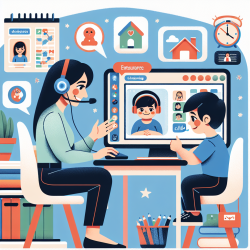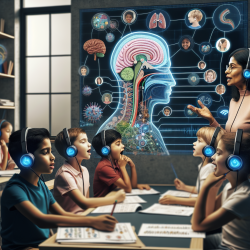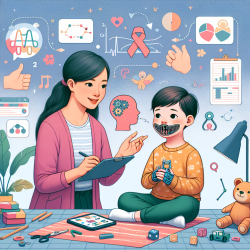As the world of healthcare continues to evolve, the field of occupational therapy is no exception. The rise of telehealth has opened up new frontiers, particularly in the educational sector, where the demand for specialized services like speech therapy in schools is growing. For occupational therapists, this shift towards online therapy services presents a unique set of opportunities and challenges. If you're an occupational therapist feeling curious about what telehealth could mean for your career and the students you serve, this exploration is for you.
Telehealth, at its core, is the use of digital information and communication technologies, such as computers and mobile devices, to access health care services remotely and manage your health care. This concept might seem straightforward, but its implications for occupational therapy in schools are profound. Through platforms like TinyEYE, therapists are now able to provide high-quality, personalized care to students in need, regardless of geographical barriers. But what does this mean for the practice of occupational therapy, and why should you, as a therapist, consider taking this next step?
The first point to consider is accessibility. For many schools, especially those in rural or underserved areas, access to specialized services like speech therapy can be a significant challenge. Traditional in-person therapy requires therapists to travel, which can be time-consuming and costly. Telehealth eliminates these barriers, making it easier for schools to provide essential services to their students. As an occupational therapist, embracing telehealth means you can impact more lives without the constraints of location.
Another aspect to consider is the effectiveness of telehealth. Some may question whether online therapy can be as effective as traditional methods. Research in this area is growing, and the results are promising. Studies have shown that telehealth services, including speech therapy in schools, can be just as effective, if not more so, in certain cases. This is attributed to the use of engaging, interactive technology that captures students' attention and facilitates learning. Furthermore, the ability to record sessions allows for ongoing assessment and tailored feedback, enhancing the therapeutic process.
However, transitioning to telehealth is not without its challenges. As an occupational therapist, you must be adept at using technology and troubleshooting any issues that arise during therapy sessions. This requires not only technical skills but also a level of comfort and adaptability with digital platforms. Moreover, establishing a therapeutic relationship online differs from in-person interactions, necessitating strong communication skills and creative engagement strategies.
Despite these challenges, the benefits of telehealth for occupational therapy in schools are significant. Beyond accessibility and effectiveness, telehealth offers flexibility for both therapists and students. Sessions can be scheduled more easily around school and personal commitments, leading to higher attendance rates and consistent engagement. Additionally, telehealth allows for a collaborative approach to therapy. Parents and teachers can more readily participate in sessions and implement strategies in the student's daily environment, reinforcing the therapy's impact.
As the demand for occupational therapy services in schools continues to grow, so does the need for innovative solutions like telehealth. Platforms like TinyEYE are at the forefront of this transformation, providing therapists with the tools and support needed to deliver high-quality online therapy. By embracing telehealth, you can expand your reach, enhance your practice, and make a profound difference in the lives of students who need it most.
Yet, the decision to embrace telehealth should not be taken lightly. It requires a commitment to continuous learning and adaptation. As technologies evolve, so too will the methods and strategies for effective online therapy. Staying informed and engaged with professional development opportunities is crucial for success in this dynamic field.
In conclusion, the future of occupational therapy in schools is inextricably linked with telehealth. This shift towards online therapy services offers a world of possibilities for therapists willing to explore and adapt. If you're feeling curious about what telehealth could mean for your career and the students you serve, now is the time to take that next step. Embrace the challenge, harness the potential of telehealth, and join the movement towards a more accessible, effective, and flexible approach to occupational therapy in schools. The journey may be new and unfamiliar, but the impact you can make is undeniable. Let your curiosity lead the way.
As we navigate this transition, remember that platforms like TinyEYE are here to support you every step of the way. With comprehensive resources, training, and a community of like-minded professionals, TinyEYE is dedicated to empowering occupational therapists to excel in the digital age. The future is bright for those who dare to embrace change and make a difference. Are you ready to take the next step?










